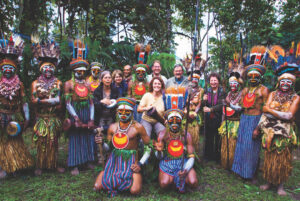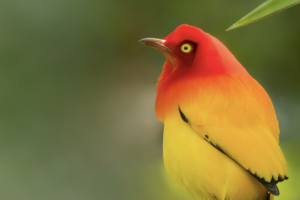Polynesian tattoos are now well known all over the world, but the art of tattooing has been practiced throughout the islands of French Polynesia for centuries.
In fact, the word ‘tatau’ originated here, with sacred motifs and symbols reflecting each person’s individual history. The opening image shows a man with facial tattoos from Nuku Hiva, Marquesas Islands in French Polynesia by Grégoire Le Bacon.
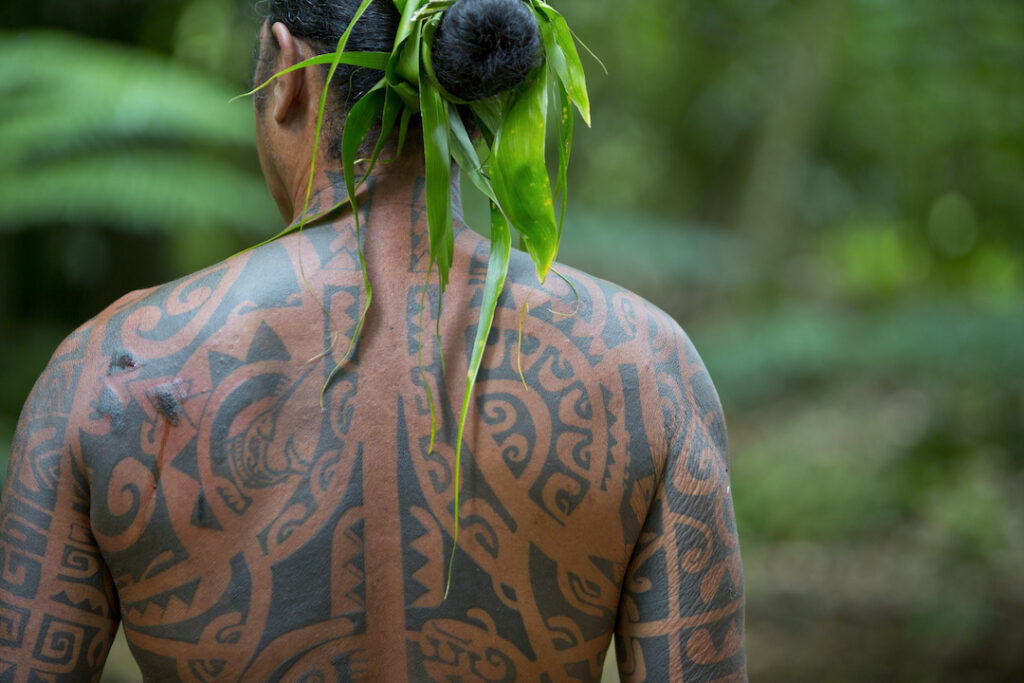
The origin of tattoos
There are a nubmer of legends concerning the mythical origins of the tattoo, but they all have one thing in common: they are always a gift from a god to man. As such, tattoos were sacred, performed by a priest and represented a link between heaven and earth. Certain motifs were even thought to protect man from the loss of his ‘mana’ or spirit. They were also signs of beauty and in earlier times were considered a rite of passage from adolescence to adulthood.
The designs were usually geometric and based on natural forms such as plants, animals and the environment.
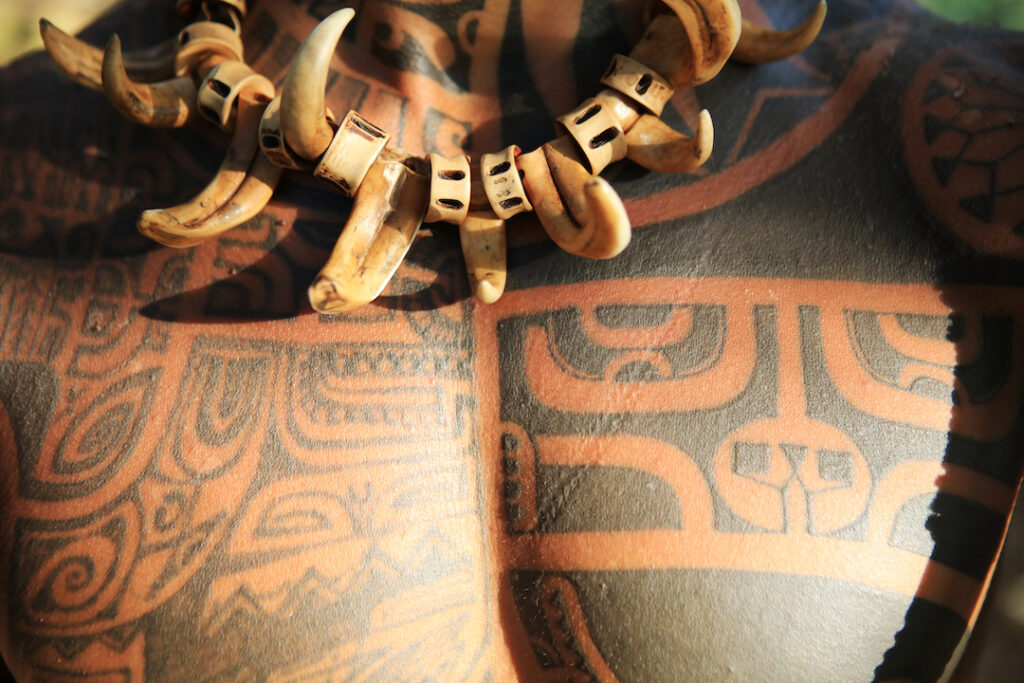
Role in traditional society
Tattoos existed throughout nearly all the Polynesian islands, and tattooing was widely practised. Different populations developed their own tattooing practices as well as designs and motifs, which were specific to each archipelago.
In pre-European society, tattooing was a marker of social standing, indicating a person’s territory, tribe, family or level on the social hierarchy. It could also mark a social accomplishment like puberty or marriage, or represent significant events in a person’s life like acts of bravery in war or prowess as a hunter or fisherman. It could also simply be decorative. Both men and women were tattooed.
While it was not a compulsory practice, it would have not been considered socially acceptable to have no tattoos at all.
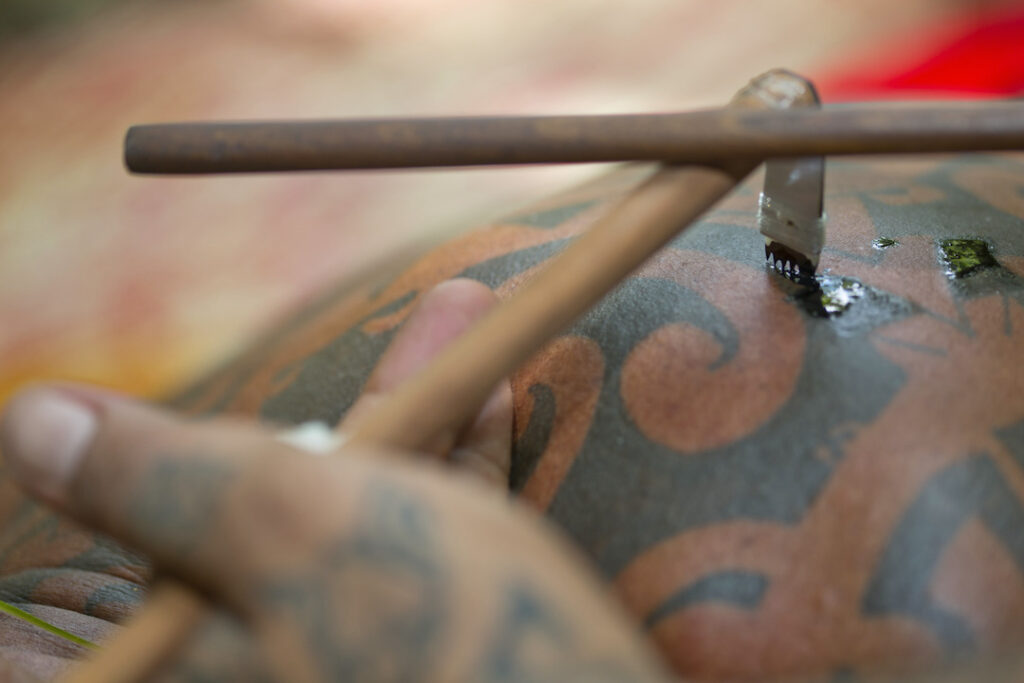
The tools of the trade
Tattoos were performed by a ‘priest tattoist’ known as ‘tahu’a tatau,’ in the Society Islands and ‘tuhuka patu’ tiki in the Marquesas Islands. The role was afforded great respect and wealth, and was often passed down from father to son.
The tools of traditional Polynesian tattooing comprised a small serrated comb, made of bone, tortoiseshell or mother-of-pearl, fixed to a wooden handle. The teeth were soaked in ink based on charcoal from the ‘ti’a’iri,’ or candlenut, which was then diluted in oil or water. The teeth were placed on the skin while the tattooist struck the handle with another piece of wood, causing the skin to break and the ink to penetrate beneath it.
With these traditional tools, producing a tattoo could be extremely painful and took anywhere from days, weeks, months or even years to be completed.

Ban and revival
At the end of the 18th century, both Catholic and Protestant missionaries in the islands fought against the practice of tattooing, and it was banned as part of their mission to bring Christianity to the local population.
However, at the beginning of the 1980s, the tattoo grew in popularity in Polynesian society as a way of renewing and reclaiming their Polynesian identity. While they are now more decorative rather than used for sacred or social purposes, tattoos are still an important way for people to connect with their culture, heritage and community.
Polynesian tattoo artists are now famous all over the world, and their art is often inspired by and pays homage to traditional tattoo designs, while also innovating and expanding upon them.
Want to learn more about French Polynesian culture? Experience the beauty and wonder of the islands by swimming with stingrays.






